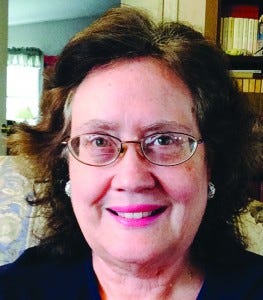From the Editor - August 2015 Supplement
August 24, 2015
 Welcome to our first full issue of summaries from our 2015 BioProcess Theater programs. This is a bit of a different concept and format from our regular issues and supplements, so a few words of explanation are necessary.
Welcome to our first full issue of summaries from our 2015 BioProcess Theater programs. This is a bit of a different concept and format from our regular issues and supplements, so a few words of explanation are necessary.
At the Interphex conference (21–22 April 2015) and the Biotechnology Industry Organization’s annual convention (16–18 June 2015), BPI again organized and conducted presentation programs within the exhibit halls. We have been holding the BPI Theater @ BIO for eight years now, and the BPI Theater @ Interphex was in its second year for 2015. Last year, we published special reports comprising brief summaries of the theater presentations, guiding our readers to full audio recordings on our website (www.bioprocessintl.com/category/ multimedia).
This year, we combined the two programs and used our supplement format to lengthen the summaries, thus providing you with more detail. The URLs provided will take you to full audio presentations on our site that include the original slide presentations as a visual component — for a more complete online version of our BioProcess Theater experience. So we are grateful to our marketing and digital content strategist, Leah Rosin, for her hard work in setting those up for us.
Attendance at the theaters has been excellent this year, offering exhibit-hall-only registrants at two major conferences a full technical program to explore. Our Interphex theater program (in New York, NY) focused on manufacturing strategies, beginning with advances in and applications of single-use technologies. The associated roundtable discussion introduced the topic of our upcoming December 2015 supplement: looking at how companies evaluate whether to implement single-use or stainless steel — and for which stages of manufacturing. The second Interphex roundtable focused on fill–finish and flexible manufacturing approaches.
At the BIO International Convention in Philadelphia, PA, daily roundtables explored innovative strategies for speeding development, managing contract relationships, and advantages to be gained in partnering with CDMOs. Associated tracks organized individual presentations on cell-line/process development; formulation, fill and finish; clinical and commercial manufacturing; and outsourcing trends from a business perspective.
But I must offer a rare editorial “disclaimer”: As I write this, the BIO convention was only three weeks ago. Presented herein are editorial summaries based on transcripts of each recorded presentation. We as usual did our best to identify the important points and convey each speaker’s statements as accurately as possible — but (because of time constraints) this has been an unreviewed issue of necessity. If you have any questions about a summary, however, please visit our website and enjoy the full presentation for more context.
This special summer issue has required the assistance of several people. First, I want to acknowledge the work of our publisher, Brian Caine, and his team in creating two excellent and well-attended programs. We are grateful to those industry experts who participated. And we certainly asked quite a lot in a very short period from our transcriptionists: Alison Center (our editorial assistant); Lorene DiLeo (LRD Enterprises); Joanna Parson (Letter Perfect Transcription); and the team at 3Play Media. Only based on their work were senior technical editor Cheryl Scott, editorial assistant Alison Center, and I able to prepare these summaries for you.
A few of these presentations are scheduled to be adapted into full articles/special reports for upcoming issues. Please let me know if you are especially interested in seeing a paper based on one of these summaries in particular.
Our friends at the Women in Biotech organization (www.womeninbio.org) presented a final roundtable on Thursday, 18 June 2015, at the BIO convention that is not summarized herein due to space limitations and technical difficulties. It will be adapted, however, into an article for this year’s December “executive-themed” issue of BPI. Only one duplicate presentation was featured at both conferences: Bill Hartzel’s talk (from Catalent Pharma) on reducing risks associated with advanced aseptic processing appears only in the Interphex section of this supplement.
To access the presentations online, please go to
www.bioprocessintl.com/Interphex2015
www.bioprocessintl.com/BIO2015.
I hope that you find this collection of summaries as interesting as we do — and that this format accurately conveys both the excellent work of our BioProcess Theater speakers and the dynamic nature of our industry. Our team is already looking ahead to the 2016 calendar for theater scheduling, so we welcome your suggestions. If you’d like to propose a talk for Interphex or BIO next year, now is the time to let us know!

You May Also Like





